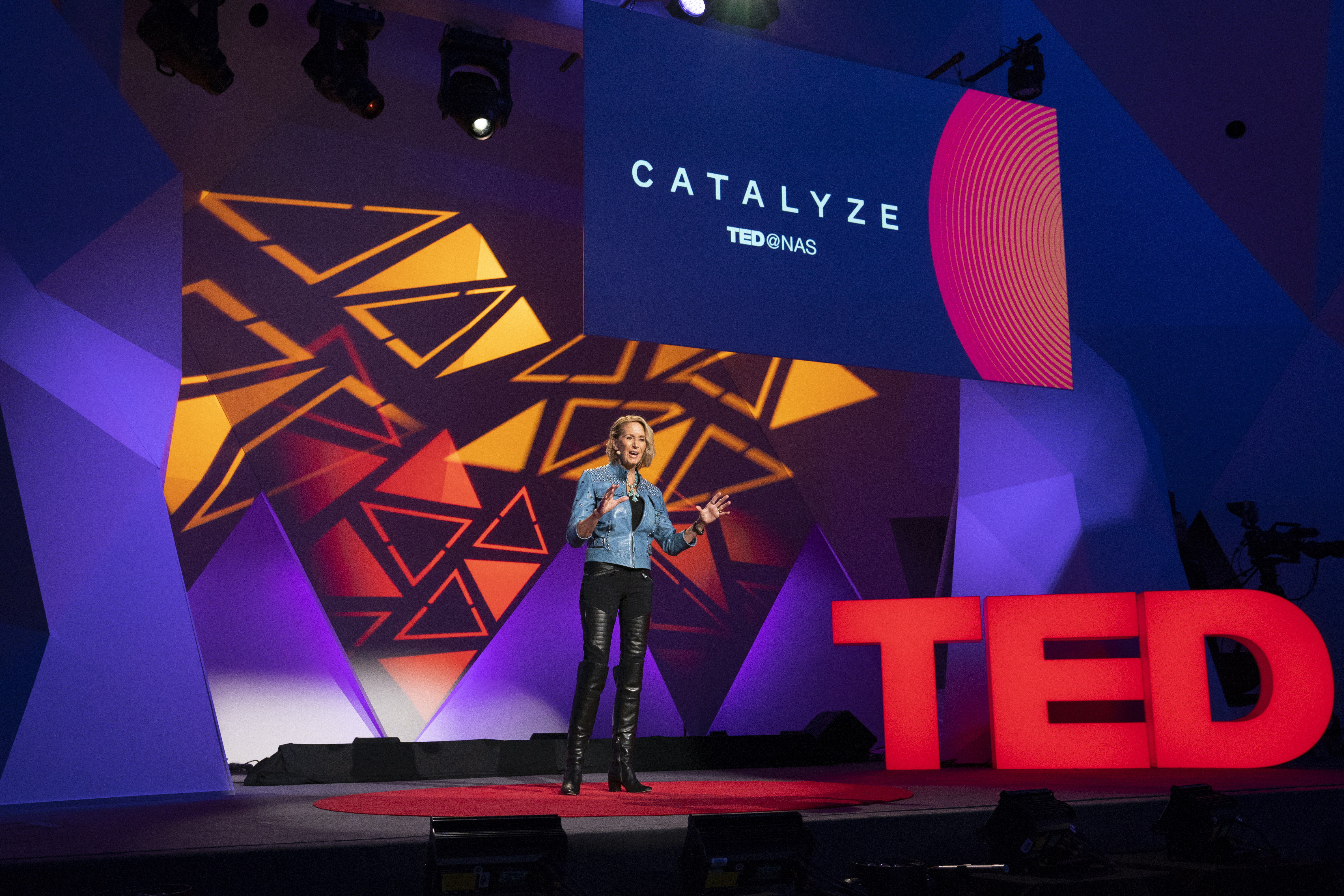
Marcia McNutt, President of the National Academy of Sciences, opens TED@NAS at The National Academy of Sciences on November 1, 2019, in Washington, DC. (Photo: Ryan Lash / TED)
Science catalyzes progress. It allows us to explore our biggest questions, generate new ideas and seek out solutions. At TED@NAS, 19 speakers and performers explored how science is igniting change and fueling our way forward — through radical collaboration, quantum leaps and bold thinking.
The event: TED@NAS, for which The National Academy of Sciences, The Kavli Foundation and the Simons Foundation partnered with TED to offer an exciting day of original TED Talks, hosted by TED’s David Biello and Briar Goldberg
When and where: Friday, November 1, 2019, at the National Academy of Sciences in Washington, DC
Special performance: A poetry reading by Marilyn Nelson
Opening and closing remarks: Courtesy of Marcia McNutt, President of the National Academy of Sciences; Robert Conn, President of Kavli Foundation; and Marilyn Simons and Jim Simons, cofounders of the Simons Foundation
The talks in brief:
Jim Hudspeth, ear enthusiast
Big idea: Meet “hair cells”: the beautiful and mysterious cells in your inner ear, which allow you to hear the world around you.
Why: Jim Hudspeth has spent the last 45 years studying hair cells, the tiny biological powerhouses that make hearing possible (and that, despite their name, have nothing to do with the kind of hair that grows on your head). On top of each hair cell are “stereocilia”: microscopic rods that twitch back and forth in response to sound, turning vibrations into electrical signals that your brain can interpret. The louder the sound, the more they tremble — with a response time that’s fully a thousand times faster than our other senses. Hudspeth and his team are working to decipher the molecular strategy of hair cells in the hopes of finding a way to reverse hearing problems.
Fun fact: In a very quiet environment, such as a sound chamber, 70 percent of normally hearing people emit sound from their ears!
Paul McEuen and Marc Miskin, micro-roboticists
Big idea: Paul McEuen, Marc Miskin and their colleagues create tiny robots to navigate microscopic worlds. Someday scientists hope to “train” these robots to study (and potentially battle) crop diseases, cancer cells and a host of other microbial menaces.
How: McEuen and Miskin enlist existing semiconductor components and new, innovative materials to create laser-programmable, remotely piloted “robots” with folding platinum legs and brains 1/10,000th the size of a smartphone. These robots could someday revolutionize our understanding of an unseen universe.
Quote of the talk: “Instead of just watching the micro-world, we as humans can now build technology to shape it, to interact with it, to engineer it. In 30 years, when my son is my age, what will we do with that ability?”
Amanda Schochet, ecologist, micro-museum maven
Big Idea: Many large-scale solutions to the world’s problems are simply too slow. To help speed things up, we need to think small.
How? As an ecologist in Southern California, Amanda Schochet studied how bumblebees interacted with “habitat fragments,” small patches of native plants thriving in barren landscapes. Taken together, these fragments made up a vast network of resources, helping bumblebees adapt to environmental change. This gave Schochet an idea: to create “social habitat fragments” for humans in order to cultivate stronger communities and solve our own problems. Thus, the MICRO museum was born: tiny, dense information hubs that can be installed anywhere, from hospital lobbies to libraries, helping people in underprivileged spaces connect and grow. Schochet offers four tips for designing your own micro-solution: zoom in to see how systems interact; look for resources gaps; collaborate with other habitat fragments; and transform your fragment. By building tiny pockets of opportunity, we can knit together community networks that are resilient and expansive.
Quote of the talk: “There are habitat fragments everywhere: passionate individuals and groups of all sizes building toward a system with more equal access … One by one, together, we are filling gaps, strengthening systems that we all depend on.”
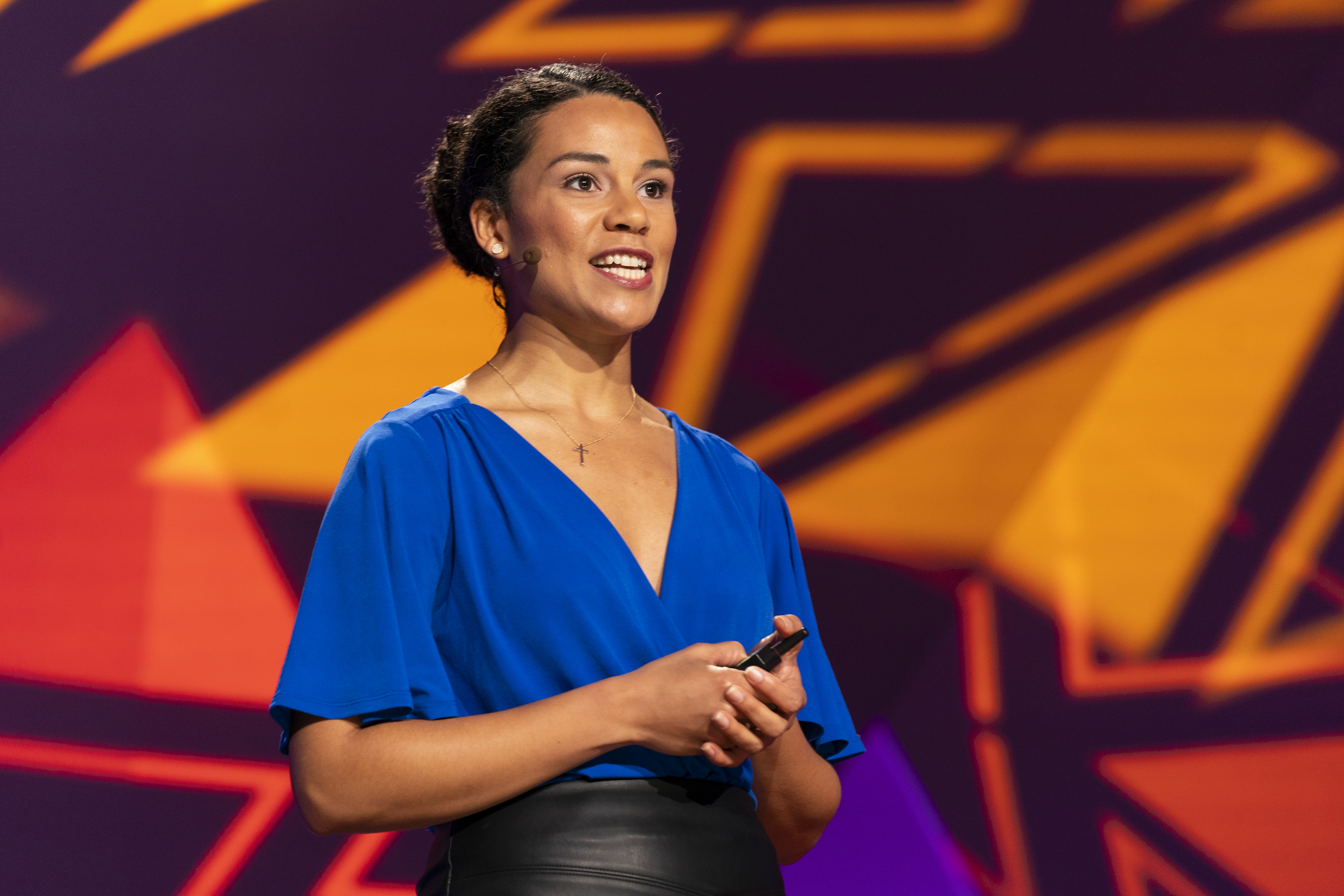
By studying oxylipin — a chemical “language” spoken by both phytoplankton in the ocean and the immune cells in our bodies — we can gain a deeper understanding of the planet and ourselves, says oceanographer Bethanie Edwards. She speaks at TED@NAS at The National Academy of Sciences on November 1, 2019, in Washington, DC. (Photo: Ryan Lash / TED)
Bethanie Edwards, oceanographer
Big idea: By studying oxylipin — a chemical “language” spoken by both phytoplankton in the ocean and the immune cells in our bodies — we can gain a deeper understanding of the planet and ourselves.
How? Chemicals speak several “dialects,” such as those spoken by hormones, pheromones and toxins. Oxylipin is another such dialect, spoken when fatty acids break down. In the ocean, phytoplankton cells that speak oxylipin have powerful effects on their predators — warding off hungry mouths or even causing devastating mutations in their offspring. Amazingly, cells in the human immune system speak oxylipin, too — communicating with each other to recognize bacteria and heal infected areas. By continuing to investigate how this language works, Edwards hopes we can gain new insight into how our bodies heal.
Quote: “We can think about oxylipins like death cries — they are the last words of phytoplankton.”
Karin Öberg, space chemist
Big idea: The chemical cocktail for a living planet is simple — just add water! (and hydrogen cyanide) — and now easier than ever to identify from light-years away.
How? Rather than looking for these molecules in planets that already exist, it’s better practice to observe the material before it becomes one, explains Öberg. With the help of ALMA (Atacama Large Millimeter and sub-millimeter Array), a telescope comprised of 66 satellite dishes working in unison, Öberg searches for and identifies hotbeds of molecular activity where planets eventually form. By mapping these intergalactically fertile locations, it may be possible to pinpoint life-sustaining planets like Earth.
Fun fact: Hydrogen cyanide, while an extremely deadly poison, is also a fundamental ingredient for newly forming planets.
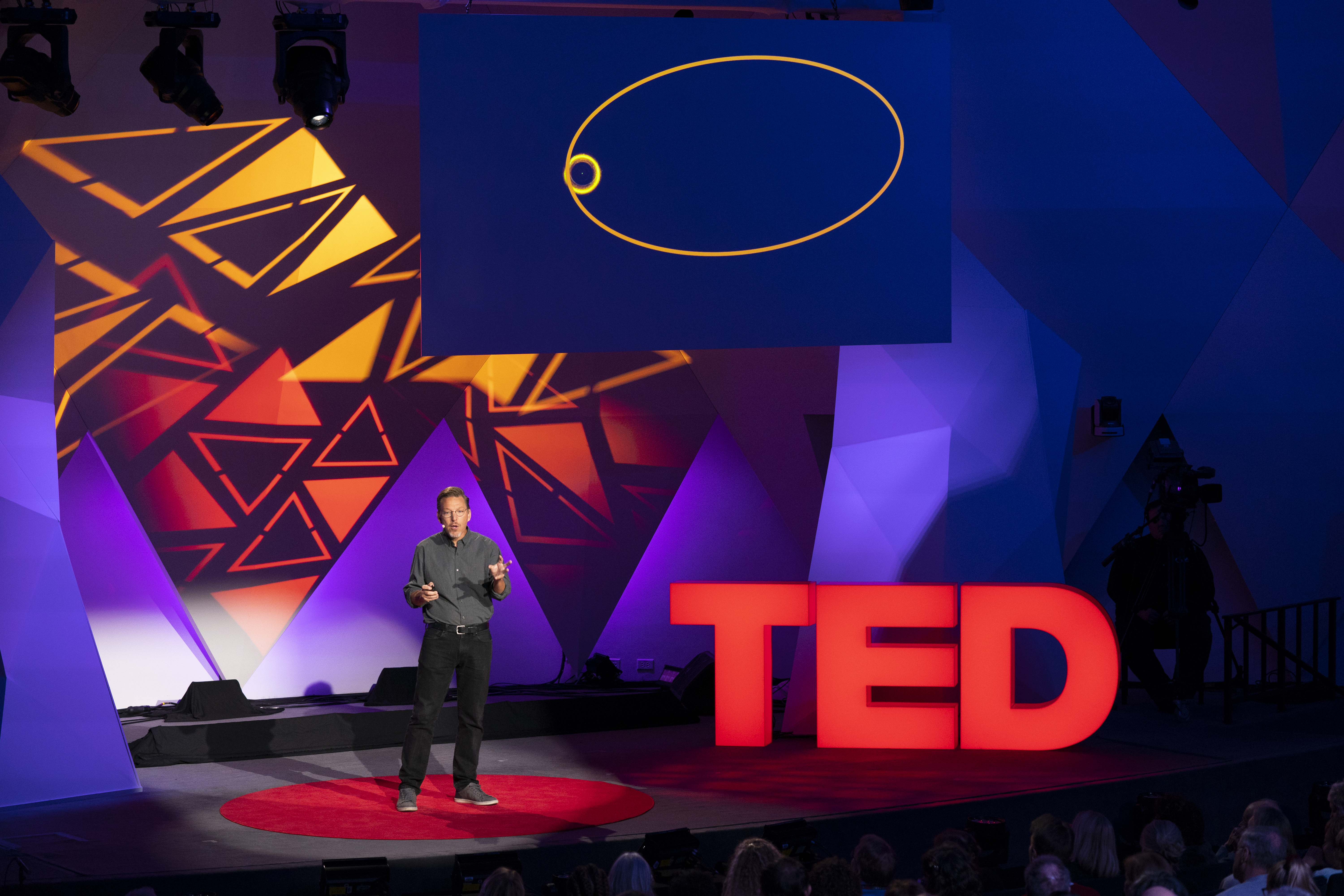
“Within the next couple years, some astronomer somewhere will find a faint point of light slowly moving across the sky and triumphantly announce the discovery of a new — and quite possibly, not the last — real planet of our solar system,” says planetary astronomer Mike Brown. He speaks at TED@NAS at The National Academy of Sciences on November 1, 2019, in Washington, DC. (Photo: Ryan Lash / TED)
Mike Brown, planetary astronomer
Big idea: There’s an unknown planet in our solar system — and we’re on the verge of finding it.
How? Our telescopes aren’t powerful enough to identify unknown objects in the far reaches of our solar system, but they are powerful enough to track the rings of icy bodies that orbit known planets. Mike Brown and his research group discovered one such icy body, called Sedna, in 2004 — it was the most distant known object in the solar system at the time. By studying Sedna’s unusual, elongated orbit, Brown and his team deduced the existence of a distant, unknown, giant planet, which they’re calling Planet 9. At six times the mass of Earth, Planet 9 would become the fifth largest in the entire solar system. It could take years to identify Planet 9’s location with our telescopes, but Brown thinks it’s already hiding in the data. Now, he’s combing through old data for unrecognized images that may show a faint, moving planet — and finally give us a glimpse of Planet 9.
Quote of the talk: “Within the next couple years, some astronomer somewhere will find a faint point of light slowly moving across the sky and triumphantly announce the discovery of a new — and quite possibly, not the last — real planet of our solar system.”
SPHERES, a live VR experience created by writer/director Eliza McNitt
Big idea: For millennia, humans have been drawn to worlds beyond our own. Could cutting-edge VR technology help us translate the invisible waves coming from deep space into sights and sounds we can actually perceive?
How: Performed by Eliza McNitt with Kyle Dixon and Michael Stein (soundtrack artists of Stranger Things), SPHERES blends 360-degree video with live sound (and the voices of Jessica Chastain, Millie Bobby Brown and Patti Smith) to map the unseeable mysteries of interstellar space — from the songs of black holes to the whistles of comets.
Quote of the performance: “Space is not silent: in fact, it’s full of sounds.”
Kelsey Johnson, astronomer
Big Idea: Light pollution is a serious threat for virtually all species, including humans. Kelsey Johnson has a plan for preserving the dark night sky.
Why? Have you ever laid on your back at night, staring up at the star-studded sky? That experience is at risk of disappearing, says Kelsey Johnson. The threat comes from light pollution, or excessive artificial light at night time, which creates a “smog of light” and cloaks our view of space. This affects species in a range of ways: for instance, dog whelks — a type of sea snail — are almost twice as likely to hang out below the water level with a predator in the presence of artificial light. Our own health is at risk, too, Johnson says: by disrupting our circadian rhythms, we may be at a greater risk of breast cancer and obesity. So what can we do? Johnson lays out a series of steps you can take every day: limit your light usage (or don’t use any at all, if you don’t need it); keep light pointed away from the sky; choose warm lights, when possible; and speak up, advocating for the wellbeing of your window to the galaxy, both in your community and on a federal level.
Quote of the talk: “If you have never seen a truly dark night sky, I want you to go out and experience one for yourself because, if you don’t, you don’t know what you’re missing and what humanity is losing.”
Risa Wechsler, physicist, dark matter researcher
Big idea: Dark matter is the most mysterious and massive feature of our universe — and we’re just starting to learn about it.
How? Everything we see can with telescopes — galaxies, planets, stars, dust, gas, us — makes up 15 percent of the total mass of the universe. The other 85 percent is dark matter — which doesn’t emit or absorb light, and can’t be seen with eyes or detected with radio waves. The only reason we know it exists is because we can detect its influence on stars and galaxies. So what exactly is dark matter, and what does it have to do with our existence? Risa Wechsler and teams of physicists are getting creative to figure that out, creating model universes in computers to see what life would look like in the absence of dark matter; building detectors deep underground to try to catch a trace of its passage; and smashing particles together to try and make it in the lab. We’re still far from understanding dark matter, Wechsler says, but studying it could unlock a whole new understanding of physics and our place in the universe.
Fun fact: Dark matter is probably on your body right now. It doesn’t bump into you — it goes right through you.
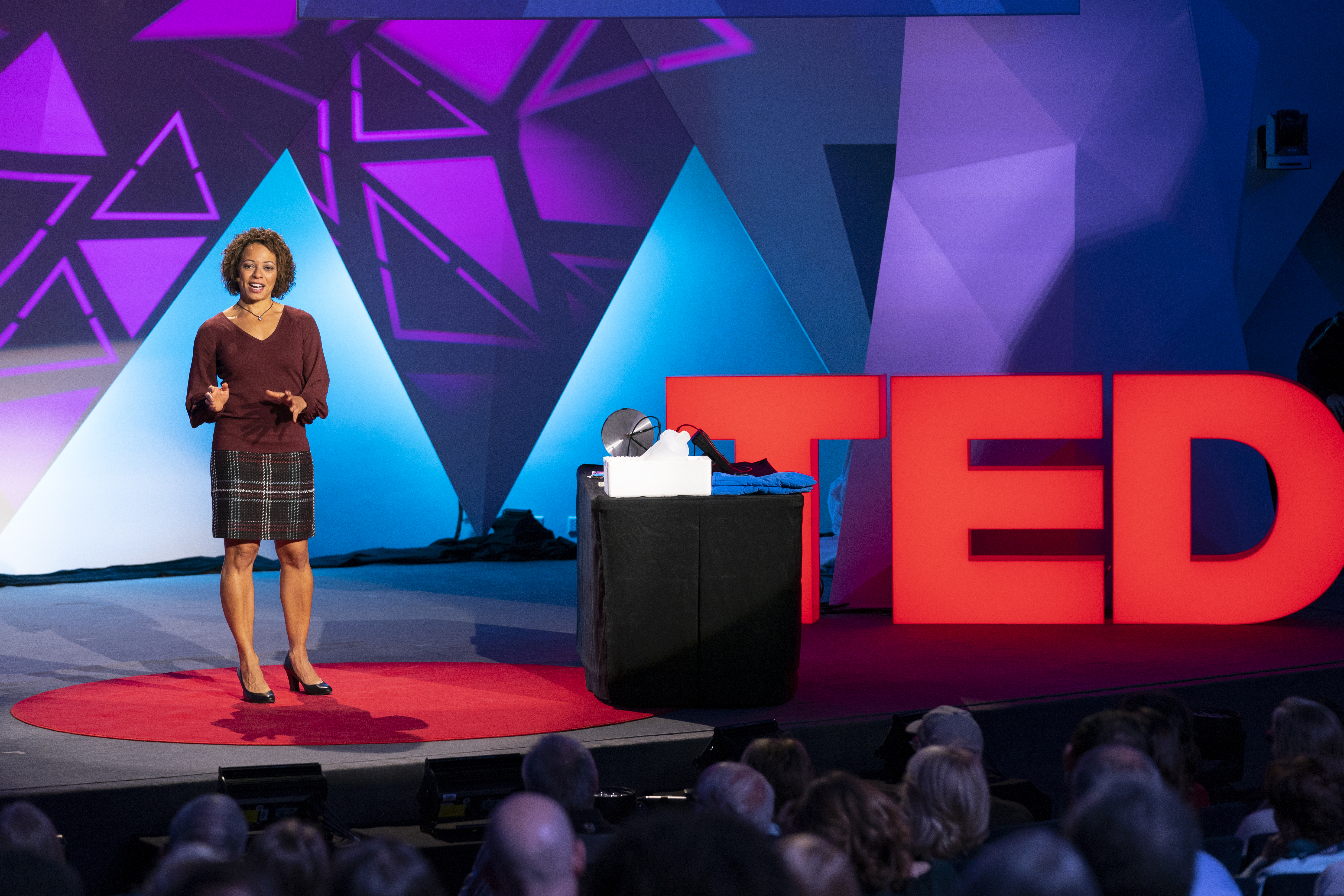
“Think about how something works, then take it apart to test it. Manipulate something and prove some physical principle to yourself. Put the human back in the technology. You’ll be surprised at the connections you make,” says experimentalist Nadya Mason. She speaks at TED@NAS at The National Academy of Sciences on November 1, 2019, in Washington, DC. (Photo: Ryan Lash / TED)
Nadya Mason, experimentalist
Big Idea: By doing hands-on experiments that help us better understand how our everyday devices work, we can reconnect to the physical world.
How? Our everyday devices are shrouded in mystery — most of us don’t know how a touchscreen works, and few of us are compelled to find out. Nadya Mason thinks that we lose understanding and connection to the world when we don’t try to figure out how things work. Experimenting is intuitive to us: babies learn about the world by interacting with it. At some point, though, we’re taught to simply accept the information given to us — but by experimenting, we can rediscover that instinct of curiosity. Hands-on experimentation and testing allows us to use our senses to learn, encouraging us to make new connections and discoveries, Mason says. The research backs this up: hands-on learning improves retention, understanding and well-being. By pursuing that tingle of curiosity and experimenting, we can demystify our surroundings, regain agency over our devices — and have fun.
Quote of the talk: “Think about how something works, then take it apart to test it. Manipulate something and prove some physical principle to yourself. Put the human back in the technology. You’ll be surprised at the connections you make.”
Molly Webster, sex chromosome editor
Big Idea: It’s time to let go of the belief that the X and Y chromosomes define biological sex as a binary — and start celebrating the nuances of science and the diversity of our bodies.
How? While the X and Y chromosomes do determine some part of biological sex, the genes they carry have many other functions, says Molly Webster. For instance, only four percent of the nearly 1,100 genes on the X chromosome have to do with sex determination. The simplistic definition of the X and Y chromosomes misrepresents the actual science of what they do in our bodies, an impact that can ripple across society and pave the way for discrimination. In major sports and in the justice system, for example, people have used these ideas to justify mistreatment against people who have different chromosome orders. Webster calls for us to make room for more inclusive and informed science by incorporating a broader understanding of the X and Y chromosomes in our classrooms and research labs.
Quote of the talk: “We’re at this point where we’re thinking: How do we want to teach science? How do we want to fund science? Who do we want to be as a society? Shouldn’t we allow ourselves to think about the X and Y chromosomes a little more broadly … and if we do, what insights would we gain?”
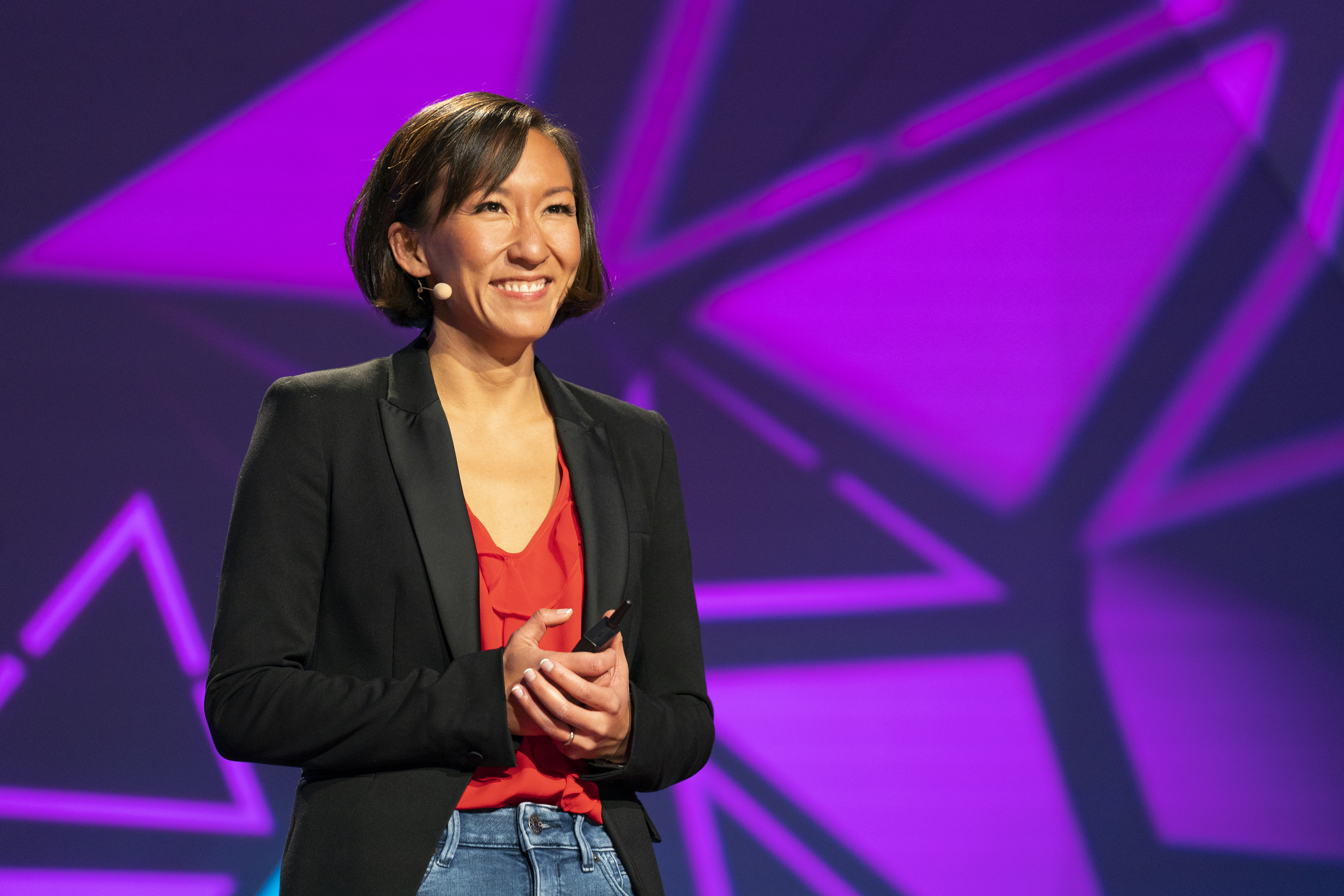
“When we truly understand exactly how the mind comes from the brain, we will improve the lives of everyone who will have a mental illness in their lifetime … as well as everyone else with whom they share the world,” says neuroscientist Kay Tye. She speaks at TED@NAS at The National Academy of Sciences on November 1, 2019, in Washington, DC. (Photo: Ryan Lash / TED)
Kay Tye, neuroscientist
Big idea: It’s common knowledge that physical processes within the brain determine our state of mind: depression, anxiety and a host of other conditions are fundamentally linked to brain activity. Studying the link between the brain and the mind (or emotions) could help uncover effective treatments for mental disorders at their source.
How: By studying neural pathways, Kay Tye is shedding light on how neurons give rise to mental states. Her lab discovered that a region called the amygdala represents a “fork in the road” determining negative or positive emotional outcomes — and as their research continues, they’re identifying regions linked to overeating, anxiety and other negative behaviors. Tye believes that treatments targeting specific neural circuits could lead to a mental health revolution.
Quote of the talk: “When we truly understand exactly how the mind comes from the brain, we will improve the lives of everyone who will have a mental illness in their lifetime … as well as everyone else with whom they share the world.”
Angelicque White, biological oceanographer
Big idea: Angelicque White studies the base of the Pacific Ocean’s food web: microbes. This “forest of the sea” is composed of the most important organisms on the planet, whose health is directly linked to the health of the oceans.
How: Ocean microbes provide food for many of the ocean’s larger inhabitants and are a crucial barometer of marine chemistry. Rising marine temperatures are throwing this microbial ecosystem out of balance, leading to toxic algal blooms that ruin shellfish harvests and impact the lives of fish and marine mammals. By tracking the composition of our oceans over time, White and her colleagues hope to understand both marine health and how we might rejuvenate it.
Quote of the talk: “I personally believe that sustained observation of our oceans and our planet is the moral imperative for our generation of scientists. We are bearing witness to the changes that are being inflicted upon our natural communities, and by doing so, it provides us the opportunity to adapt and enact global change — if we’re willing.”
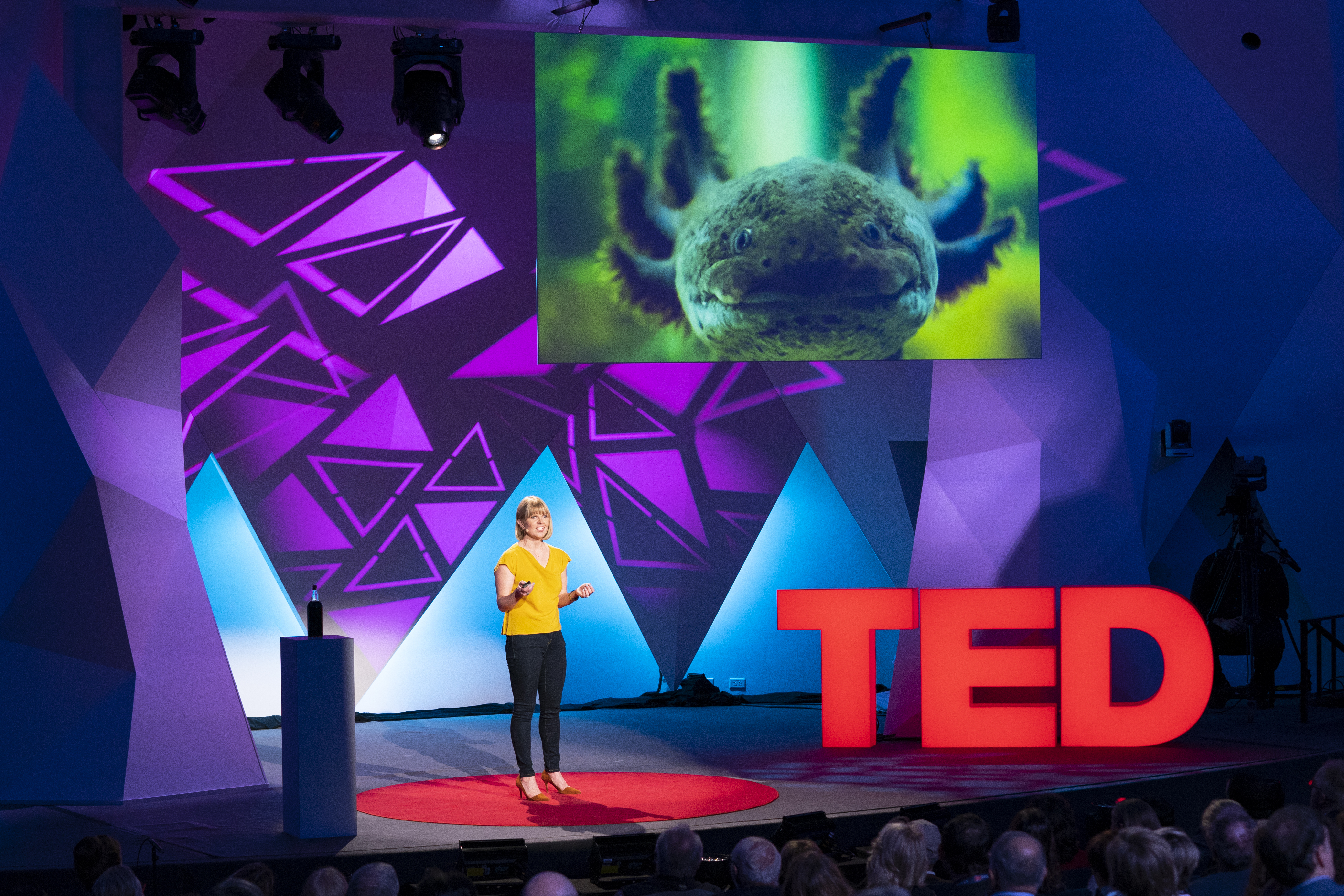
“How do you save one special, weird species from going extinct?” asks science journalist Victoria Gill. “You find people who know all about this animal, and you ask them, and you listen to them.” She speaks at TED@NAS at The National Academy of Sciences on November 1, 2019, in Washington, DC. (Photo: Ryan Lash / TED)
Victoria Gill, science journalist
Big idea: Science alone can’t save the world. To make big breakthroughs, we also need collaboration between scientists and local experts.
How? To save the axolotl — an exotic (and adorable) salamander found in the freshwater lakes of Mexico — scientists teamed up with the people who know this wonderfully weird amphibian best: the Sisters of the Immaculate Health. For centuries, these nuns have concocted a special axolotl medicine, gathering crucial information and building up wisdom about this rare species. Gill reminds us that unusual collaboration between traditional scientists and knowledgeable locals often results in a deeper, fuller understanding of our ecosystems and the creatures that live in them — leading to more successful solutions for all.
Quote: “How do you save one special, weird species from going extinct? … You find people who know all about this animal, and you ask them, and you listen to them.”
Enrico Ramirez-Ruiz, astrophysicist, stellar storyteller (and certified stellar mortician)
Big idea: We are all — fundamentally, universally, atomically — connected.
How? We’re connected by the birth, death and rebirth of stars: the iron in your blood, the oxygen you breathe and the silicon in your phone relies on the interstellar life cycle, Enrico Ramirez-Ruiz says. Atomic-grade supernovas transform lighter elements (hydrogen and helium, for example) into heavier ones (like iron) — one of the most important being oxygen. This continuous elemental recycle explains everything from the Big Bang to the air we breathe, inextricably intertwining cosmic and human history. Essentially, we are life forms evolved to inhale the waste products of plants but also supernova explosions — which means it’s technically accurate to say that you’ve shared oxygen molecules with the world’s greatest minds.
Quote of the talk: “Our atoms participated in an epic odyssey with time-spans from billions of years to mere centuries — all leading to you.”